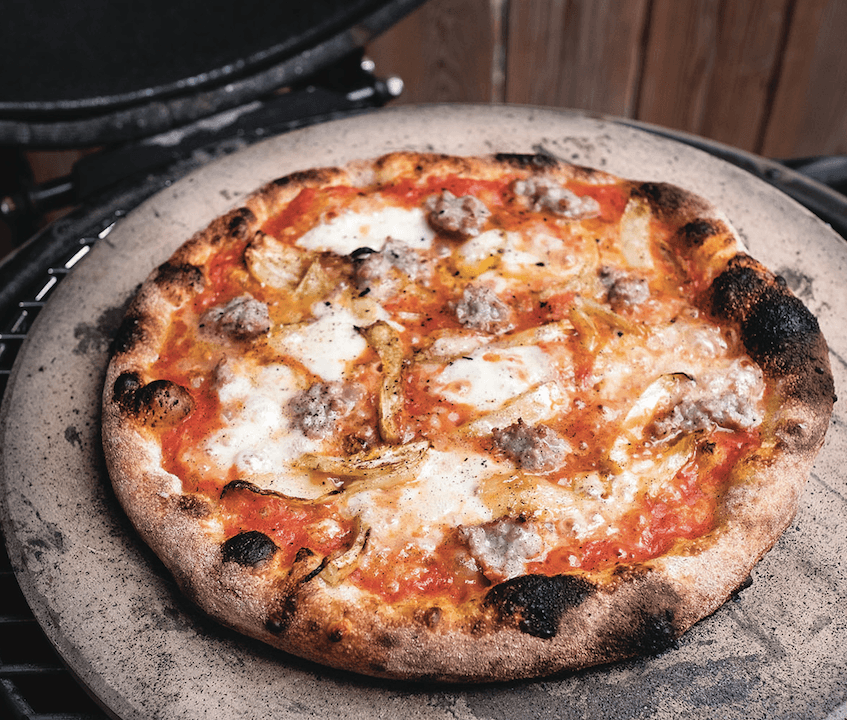Kamado-Grilled Neapolitan Pizza
The Big Green Egg and other kamado-style grills get super hot, up to 800 degrees F (427 C). They’re typically made of ceramic, which is similar to the firebricks in a wood oven, so all in all, they make great pizza. Just be careful not to get them too hot or your crust will burn, especially on the bottom. With the high temperature and short bake time, Naples-style dough at 60% hydration works well, but I like the extra puff you get from a little more water in the dough, so I use Naples-style dough at 70 percent hydration.Makes one 10- to 12-inch round pizza
- 1 dough ball, preferably Naples dough at 70 percent hydration, about 270 grams/9.5 ounces
- Toppings of your choice
- Flour, for dusting






